
Great works of art are not easy to review. They are not common like the cesspool of bad art. Bad art is easy to deconstruct, to show how pathetically horrible they are. “So bad it’s good” exists because these works are so bizarre, so extraordinary that they become unique. Bad art is never unique its badness. In contrast, great works of art always end up redefining what ‘good’ is, so any review of a masterpiece will never be analytical and conclusive. It always end up chasing something that we can only grasp a piece of, like a poet looking at a beautiful line he wrote and knowing he can never write a worthy poem of it.
Kaiba is one of those artworks. I say it deliberately. Judgment of it is not confined to anime. It transcends media, reaches something so deeply human and awe-inspiring that it becomes a part of you. Do not expect a rational explanation of why this anime is better than pretty much anything. If we understood completely why it’s so good, we’d have masterpiece dropping from the skies. I can try, though.

The key to understanding Kaiba is understanding how it tells a story, specifically how it takes advantage of the personal nature of fiction. All art, including fiction, is personal. It is a product of human thought, a translation of your entire Being – your experiences, philosophy, unconscious, passions – into some kind of experience that another being can take on. Kaiba is a ridiculously expressive work. Every scene is imbued with emotion. Every object says something about what it represents. It’s so emotionally draining because of that.
Memory is the big topic, but Kaiba isn’t just about memory. In a cliched way, it’s existentialist, asking what we are. Its answer is memories, but memories are also information. The anime explores this intersection of information that defines us. Notice the symbols. When memory isn’t converted to information, it is organic and free – it is lifelike memory eggs. These are also tiny, fragile and fleeting. The memories float away and are easily lost.
The roe is us, so they use to show how tiny we are when death strikes. When a character dies, their bodies become liquid and vanish completely. The ‘self’ becomes just a bunch of yellow pieces floating way. It expresses the loss of death, how death completely erase us and we become nothing. The memory chip – a drill-like thing – can also die so easily, if it’s lost it’s gone forever. Sure, we can try to capture those roe or to protect the chip, but it’s so difficult. It’s an expression of how fragile we are.
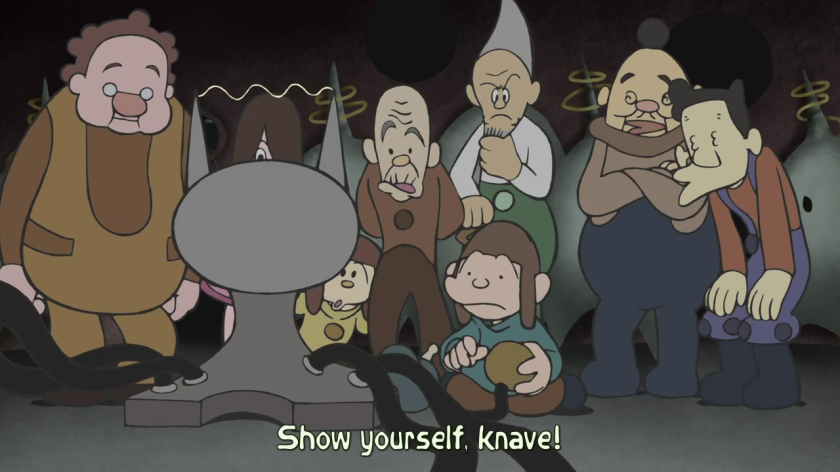
Yet converting ourselves into information makes us so much easier to control, and easier for us to control others. Altering other people’s memories is a sci-fi trope, but this anime is concerned with how it affects everyone, how it affects our personal lives. We see the small results of this – how erasing someone’s childhood erases who they are and they end up becoming nothing but a memory. How this power to change personal reality blurs into thinking we can change reality itself – a direct link to megalomania and tyranny.
Our memories are our personality. Once we control them, edit them, change them all lines break down. The world of Kaiba looks funny by design, but that’s because how the people experience it. People can also put their memories into a whole new body. In one episode this results in a world where bodies are manufactured like clothes. Its reality is grotesque, a mass of weird shapes that’s disorientating. Somehow we ended up creating a more chaotic reality than nature.
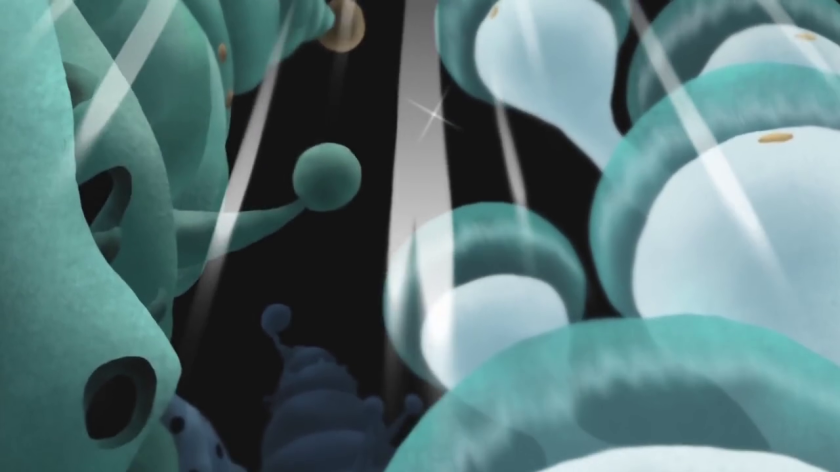
Leaning towards a socioeconomic critique of society, the anime shows a world in which memories – selves – become products. So a character sells her own body with hopes that her memory will be kept. Selves are no longer precious. This society isn’t painted with strokes of black to show you how evil rich people are. Rather, to illustrate the chaos of it, we see selling your own body and putting yourself in a chip is no guarantee. You’re relinquishing control of yourself, your grip on the world.
Yet this ‘information’ is never just ‘information’. Consciousness was the result of accumalating all these pieces of data and connecting them. So we’re never really dead, and using memories this way is using people as objects. The anime is deeply concerned with living things. In a gallery of memories, the people who own these memories cry out to be released.
Everyone’s concerns are always personal. Although the characters are simple, they have motivation and a humanity. A sheriff who really wants a girl at first seems like a greedy bastard, but he’s a person. That’s his wants, and when we see this want doesn’t make him just an asshole but a good person we’re encouraged to sympathize with him. In the end, he’s a ‘human’ being – with people he loves, things he wants, and dreams lost when death comes.
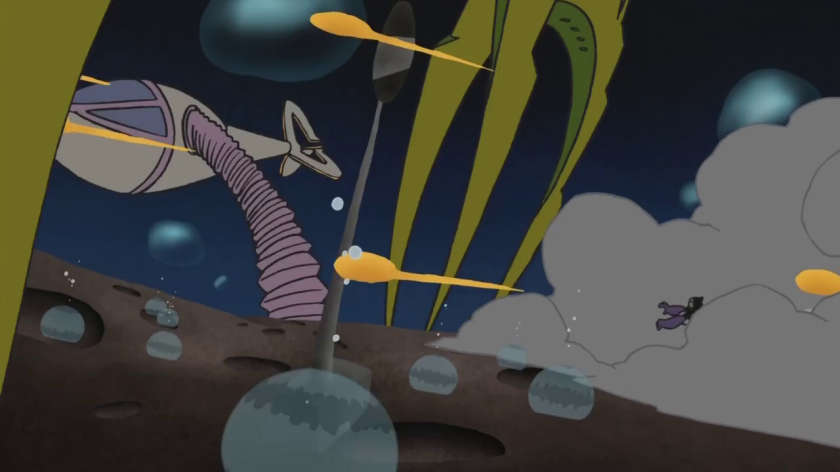
Although there are antagonists, the series always reminds us that they’re people in the most simple way. People want power, but not because they’re evil. They want it because they’re human beings, so we see the ringleader of the resistance crumbling to tears when he realizes what he’s done. He had to erase memories that painted him in a bad light, but the result was losing a friend.
This anime is in the end about treasuring people. The idea of memory is just a tool to show us how we can lose people, no matter how hard we work to keep them. We put their identity, their whole being in a chip but then that chip is lost. We sell a loved one’s body, hoping the salesman will keep the information in a chip. A friend blocks our ambition, so we erase some memories only to realize the whole person is gone. Eventually this anime reaches an important conclusion about being – we need each other, we’re social animals, power doens’t make up for it.
The castle of Warp is a lonely place. The only person he has is an all-seeing robot. He’s not happy and the only thing he can talk about are who to execute. He may be the king of memories, but these are his own memories. What good are they? In a beautiful scene Popo and the resistance at the palace, and it has a huge opening to a black void. That’s the height of power to you, a lonely high place looking out into nothing. The only thing that’s there are themselves, yet they’re craving control.
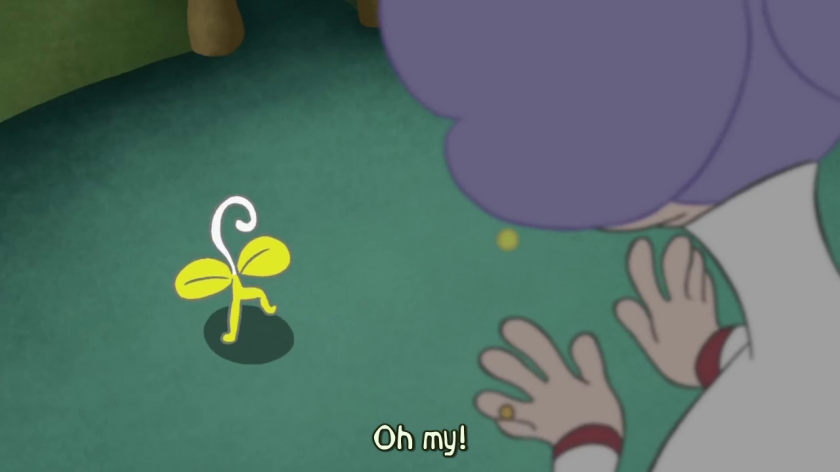
The romance between Neiro and Kaiba isn’t a symbol for romance, but what’s really important – connection. Even during oppression, they found something of their own, a precious shared memory that’s enough. Separate yourself from the struggle for power. The privileges of the rich to put themselves in memory chips and live forever aren’t that worthwhile in the end. Every world touched by this is grotesque, people are lost yet they are still people.
You cannot talk about the art without mentioning the Neverhood, which seems like a direct inspiration for the anime. Both endings and beginning borrow from it. It opens with a man seeing an unknown, bizarre world. The ending includes a darker version of the hero and a gigantic, self-sacrificing robot. Like the Neverhood, the design is cartoonish, nonsensical and imbued with meaning and emotions. Look at the planet where the only thing that matters is the story of two old people. The planet itself is nothing but their tower. The underworld is almost colorless – but almost, since it still has some life in it. The club is colorful and weird but has a dominating shade of purple – a disorientating effect. Vanilla looks like what we expect from an asshole with the fat belly and aggressive face (Only his character later proves to be more). There is even a creature who flies by a propeller and doesn’t speak – like the sidekick from old video games. It’s as unrealistic as you get, but no scene is without emotional overtones just like life – and that makes it far closer to reality than anything else.
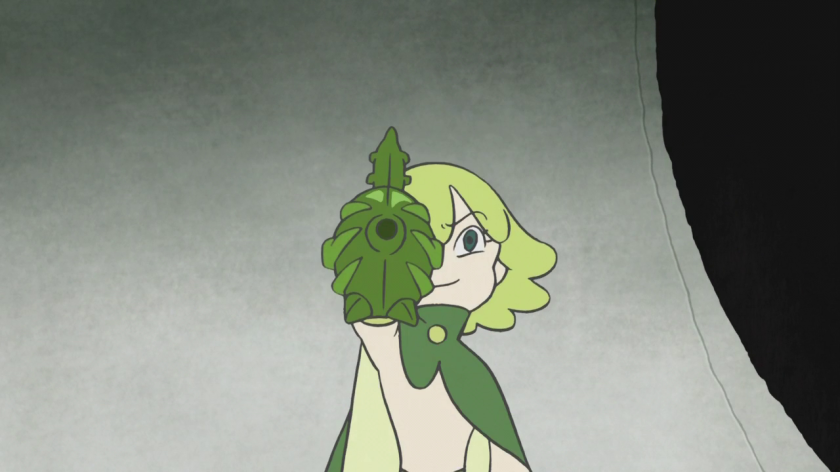
Likewise the soundtrack couldn’t be better, a collection of gentle electronic sounds. It fits with the slightly childish designs, but it has the same fragility of the world. A lot of it sounds like Boards of Canada, only it takes it to less nostalgic tones. The soundtrack mostly expresses a reflective, introspective atmosphere, one of both awe and terror. Some tracks are colder and harsher that reminds us that this world is still harsh, a world where selves can be sold. Some tracks have beautiful, intimate melodies to go along with the theme of connection.
There is no other anime like Kaiba, an anime so expressive, where every shot is charged with emotion, wonder, terror and humanity. ‘Depth’ isn’t the right word. It’s not an intellectual, symbolic exercise like Paranoia Agent or a psychological exploration like Digimon Tamers yet it’s somehow better than these two. Perhaps because it takes anime to the origin of art – the expression, not explanation, of human experience. Nothing I could write would do this anime justice.









